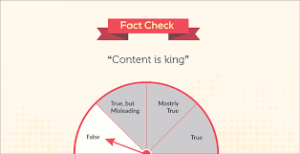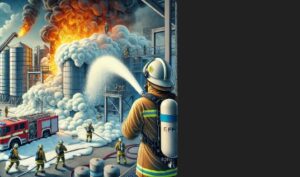What is vRealize Automation- How it Works

VMware’s vRealize Automation is a cloud management platform (CMP). It is intended to automate and streamline infrastructure and application management and delivery across hybrid and multi-cloud systems. Organizations can use vRealize Automation to design and operate their own private cloud services or consume public cloud resources while preserving governance and control.
Also Read:- SEO Trends 2024: Atit Garg Predicts Major Shifts in the World of Digital Marketing
Among vRealize Automation’s key features and capabilities are:
Infrastructure Planning
vRealize Automation automates the deployment and management of virtual machines, containers, and other infrastructure resources across a variety of cloud settings. It has a self-service interface that allows users to request and deploy resources based on specified policies and blueprints.
Management of the Application Lifecycle
From deployment to retirement, the platform covers the whole application lifecycle. It allows for the modeling and deployment of sophisticated, multi-tiered applications, as well as the provisioning of middleware components and the integration of external services.
Policy-Driven Governance
Organizations can use vRealize Automation to design policies and rules that govern resource allocation, consumption, and compliance. It enforces these restrictions during resource provisioning and monitors resource use to verify that stated guidelines are followed.
Cloud Cost Management
The platform enables enterprises to measure and optimize cloud resource utilization by providing cost visibility and management features. It supports chargeback and showback reports, assisting teams in understanding the financial implications of their resource utilization.
Hybrid Cloud Support
vRealize Automation is compatible with hybrid and multi-cloud systems, allowing businesses to install and manage applications across private, public, and hybrid clouds. Regardless of the underlying cloud infrastructure, it delivers comparable governance and automation features.
Integration and Extensibility
The platform connects with numerous infrastructure technologies and cloud providers, allowing for smooth management and automation across heterogeneous environments. It also provides APIs and extensibility options, allowing businesses to interface with existing technologies and increase vRealize Automation’s functionality.
Self-Service Portal and Catalog
Users can request and manage resources through vRealize Automation’s self-service interface. It provides a catalog of preconfigured service offerings and blueprints, allowing customers to provide and manage their infrastructure and applications with ease.
Benefits of vRealize Automation
- Self-service multi-clouds with centralized governance can be readily implemented by users.
- Use enterprise-ready Infrastructure as Code (IaC) and infrastructure pipelining to benefit from iterative development.
- Implement system compliance and vulnerability mitigation.
- Use application rollout in conjunction with network and security.
Manage the self-service and governance of Kubernetes infrastructure.
Benefits of vRealize Automation
- Increased Efficiency
- Agile Service Delivery
- Cost Optimization
- Consistent Governance and Compliance
- Enhanced Collaboration
- Scalability and Flexibility
- Improved Resource Utilization
- Streamlined IT Operations
- Better User Experience
- Multi-Cloud Management
What is the purpose of vRealize?
vRealize’s mission is to provide a comprehensive portfolio of cloud management tools and solutions that enable enterprises to manage and improve their IT infrastructure and operations across hybrid and multi-cloud environments. VMware’s vRealize suite includes a variety of tools and features aimed to improve automation, monitoring, analytics, and governance in cloud and virtualized environments.
FAQs vRealize Automation
Q1: What is vRealize Automation (vRA)?
VMware’s vRealize Automation is a cloud management platform (CMP). It helps enterprises to automate infrastructure and application deployment and administration across hybrid and multi-cloud environments. It allows for self-service, policy-driven governance, and application lifecycle management.
Q2: What are the key features of vRealize Automation?
Self-service provisioning, policy-driven governance, application lifecycle management, multi-cloud management, infrastructure-as-code, connection with third-party systems, and extensibility via APIs and plugins are some of the core aspects of vRealize Automation.
Q3: What benefits does vRealize Automation offer?
Increased operational efficiency, faster service delivery, improved resource utilization, consistent governance and compliance, cost optimization, enhanced collaboration between IT and business units, scalability and flexibility, and support for hybrid and multi-cloud environments are all advantages of vRealize Automation.
Q4: How does vRealize Automation support self-service provisioning?
Users can request and provide infrastructure resources like as virtual machines, containers, and apps through vRealize Automation’s self-service site. Users can choose from predefined service offers and blueprints, specify resource requirements, and begin the provisioning process on their own.
Q5: Can vRealize Automation integrate with existing IT systems and tools?
Yes, vRealize Automation can be integrated with a variety of third-party systems and solutions. It includes APIs, plugins, and extensibility options that enable enterprises to interface with their existing IT systems such as configuration management tools, service desk solutions, and infrastructure platforms.
Q6: How does vRealize Automation ensure policy-driven governance?
Organizations can use vRealize Automation to design policies and rules that govern resource allocation, consumption, and compliance. It applies these standards during resource provisioning to ensure that resources are allocated in accordance with specified guidelines. It also allows for monitoring and reporting to assure continuing compliance.
Q7: Does vRealize Automation support multi-cloud management?
Yes, vRealize Automation can manage several clouds. It enables enterprises to manage resources via a single interface across private, public, and hybrid clouds. Regardless of the underlying cloud infrastructure, it delivers similar management and automation features.
Q8: Is vRealize Automation suitable for large enterprises?
Yes, vRealize Automation is intended to fulfill the requirements of both small and large businesses. It provides scalability, flexibility, and comprehensive capabilities for dealing with complicated environments that include a high number of users, various applications, and multiple cloud providers.
Q9: Can vRealize Automation help optimize cloud costs?
Yes, vRealize Automation includes cost awareness and management options to assist with cloud cost optimization. It enables enterprises to measure resource usage, find cost-saving opportunities, create chargeback/showback models, and optimize resource allocation by providing monitoring and reporting tools.
Q10: Does vRealize Automation support hybrid cloud deployments?
Yes, hybrid cloud installations are supported by vRealize Automation. It enables enterprises to manage and coordinate resources across their on-premises infrastructure and different cloud providers in real time. Across hybrid environments, it delivers uniform management, policy enforcement, and automation.
Final Thoughts
The purpose of vRealize is to empower organizations with robust cloud management capabilities, automation, monitoring, and analytics tools to efficiently manage their IT infrastructure, optimize resources, improve agility, and enhance the overall operational efficiency of their cloud and virtualized environments.










